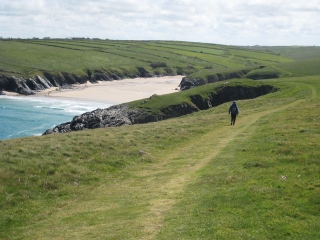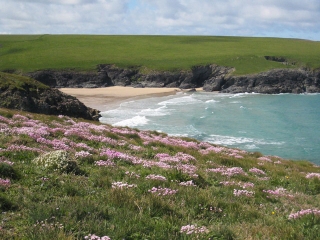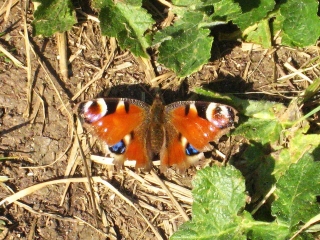This area lies one side of the Gannel Estuary, and it is almost as if time has stood still. Modern additions have been made for the benefit of holidaymakers, but the natural surroundings are quite charming and mostly unspoilt.
The popular coast path gives walkers and strollers the chance to enjoy wonderful scenery, and it never looks the same on the return journey. Golden sands and dunes are vast, whilst small coves still attract those seeking traditional Cornwall. Colours change according to season. Spring to Summer is certainly best, but we are getting longer seasons before winter sets in and more wildlife are making the most of it. Bird watching opportunities are on the increase.Dolphins and seals are are seen regularly from the coast path.
Porth Joke, locally known as Polly Joke, was once the haunt of the Cornish Chough, a medium size bird related to the Jackdaw. There are plenty of Jackdaws, and the Chough has been re-introduced to Kynance Cove area, West Cornwall. The Choughs have recently been seen at Polly Joke.
The National Trust headland “The Kelsey’s” with it’s Iron Age settlement is very popular with walkers. Old churches with ancient heritage are closeby. St Carantock (Crantock) c.1224 stands on the site of an oratory founded in the 5th Century. The ruined oratory of St. Piran AD 550, lies in the sand hills of Penhale. In recent years, restoration work has taken place to enhance the historical value of Cornwall’s patron saint. There is also a Tumulus on “The Common” close to the entrance of Beach View.
Our surroundings lend themselves to many stories concerning smugglers thus the caves and rocky inlets inspired Winston Graham to write the “Poldark” series of books and TV productions. He lived at Perranporth.







